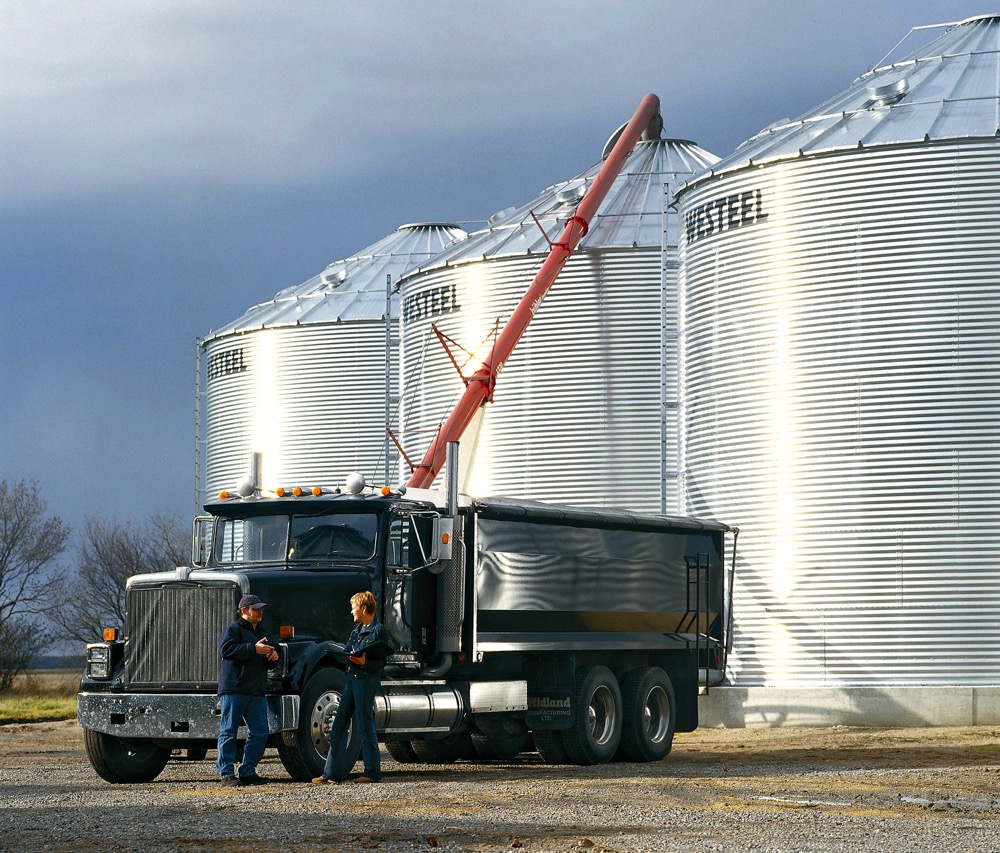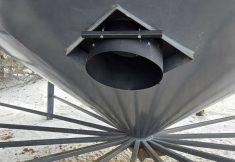As harvest comes to a close, combines are cleaned and stored, augers fall quiet and the result of all that hard work in the field is safe at home in the bin. Grain bins represent the bounty of the harvest and they are the symbol of a successful season, but they also pose serious hazards.
There a many hazards associated with grain and grain storage. Respiratory hazards, fire and explosion hazards and fall hazards. However, there is one hazard that is becoming all too common in stories about near misses, injuries and deaths in and around grain bins — grain entrapment.
Read Also

Claas brings 1000 Series SP forage harvesters to Canada
In mid-August, Claas unveiled its new line of Jaguar forage harvesters at an event in Visalia, California, deep in the heart of that state’s dairy region.
Grain entrapment can happen within seconds. There are all sorts of reasons why somebody might enter a grain bin, but without proper equipment and training, a simple action can turn into injury and even death.
First of all, just like farm equipment, grain bins should be off limits to children and unauthorized personnel. This means talking to children, employees and visitors about the dangers associated with grain bins. This first step can go a long way in preventing grain entrapment and suffocation.
It’s also a good idea to understand how grain entrapment can occur. There are three types of entrapment. Flowing grain, an avalanche of a vertical grain wall and a collapse of a grain bridge. Understanding how grain behaves under different circumstances is a part of understanding how to work safely around it.
Flowing grain:
When a grain bin is being unloaded, the grain flows in a funnel shaped path towards the auger. The grain then acts like quicksand, pulling the victim down. Depending on the size of the auger, it can take only seconds for a person to become fully emerged in grain.
Avalanche of a vertical grain wall:
Sometimes grain in a bin can become spoiled due to high moisture content and variation in temperature. This spoiled grain can lead to serious issues including the sides of the bin wall becoming encrusted in grain. Grain in bad condition can stand almost straight up and down, and removing it becomes difficult and dangerous. Victims of this type of engulfment have tried to remove the grain by shoveling at the base or poking the vertical towers. This can cause the grain to break free from the walls, resulting in a grain avalanche that can bury the worker inside the bin.
Collapse of a grain bridge:
Grain bridges form when grain on the surface becomes spoiled, moldy or frozen. The grain forms a hard crust that spans to the grain bin walls. When any of the grain is unloaded, the crust remains in place, resulting in a void under the grain bridge. The danger arises when a victim enters the bin and attempts to walk across the crusted surface. The extra weight can cause the grain bridge to collapse. This results in the victim not only falling but becoming completely submerged in falling grain.
Suffocation and entrapment can be avoided. It comes down to taking the time and energy to ensure safe operation around grain bins. First of all, make sure nobody enters a grain bin when unloading equipment is running. If you must enter a bin, shut off the unloader. Locking out the equipment before entering the bin will prevent someone from inadvertently starting the equipment while you are inside.
Don’t walk on a grain bridge. It isn’t always easy to determine if a grain bridge exists, one way to detect if a grain bridge exists take a look at the surface of the grain, look for an inverted cone or funnel after unloading from a bin. Follow fall prevention strategies and use a pole or weighted line to free the bridge. Remember to watch out for power lines.
Entering a bin to work with vertically crusted and spoiled grain requires equipment and planning. If at all possible, don’t enter the bin. Use a long wooden pole to break up grain but remember to watch out for power lines. If entering a grain bin becomes necessary because of crusted grain, a detailed plan has to be developed and appropriate safety equipment needs to be used to ensure safety. If at all possible, consider hiring a contractor to clean out the bin. They have the necessary equipment and expertise to safely and efficiently clean out the bin.
The need to enter a grain bin to clean out spoiled grain can be avoided all together. By developing storage strategies for the grain, conditions that cause spoilage and formation of vertical grain walls and grain bridges can be avoided. Grain storage specialists can give good advice about storing grain to prevent spoilage. Places to go for advice include local grain handling experts and provincial agricultural departments and ministries.
Grain entrapment can be avoided. It’s a matter of communicating and planning.
Canadian Agricultural Safety Association, casa-acsa.ca.















